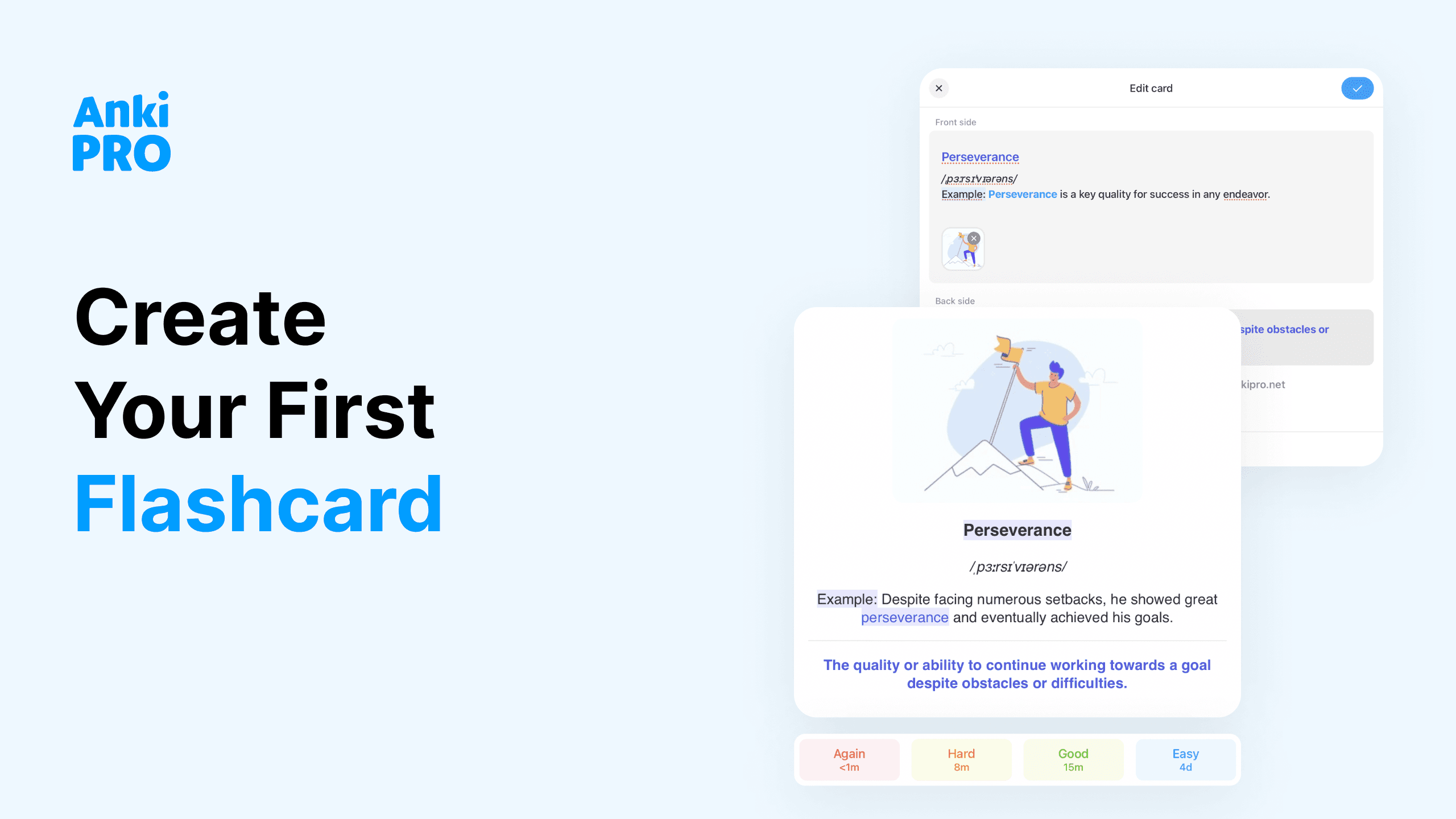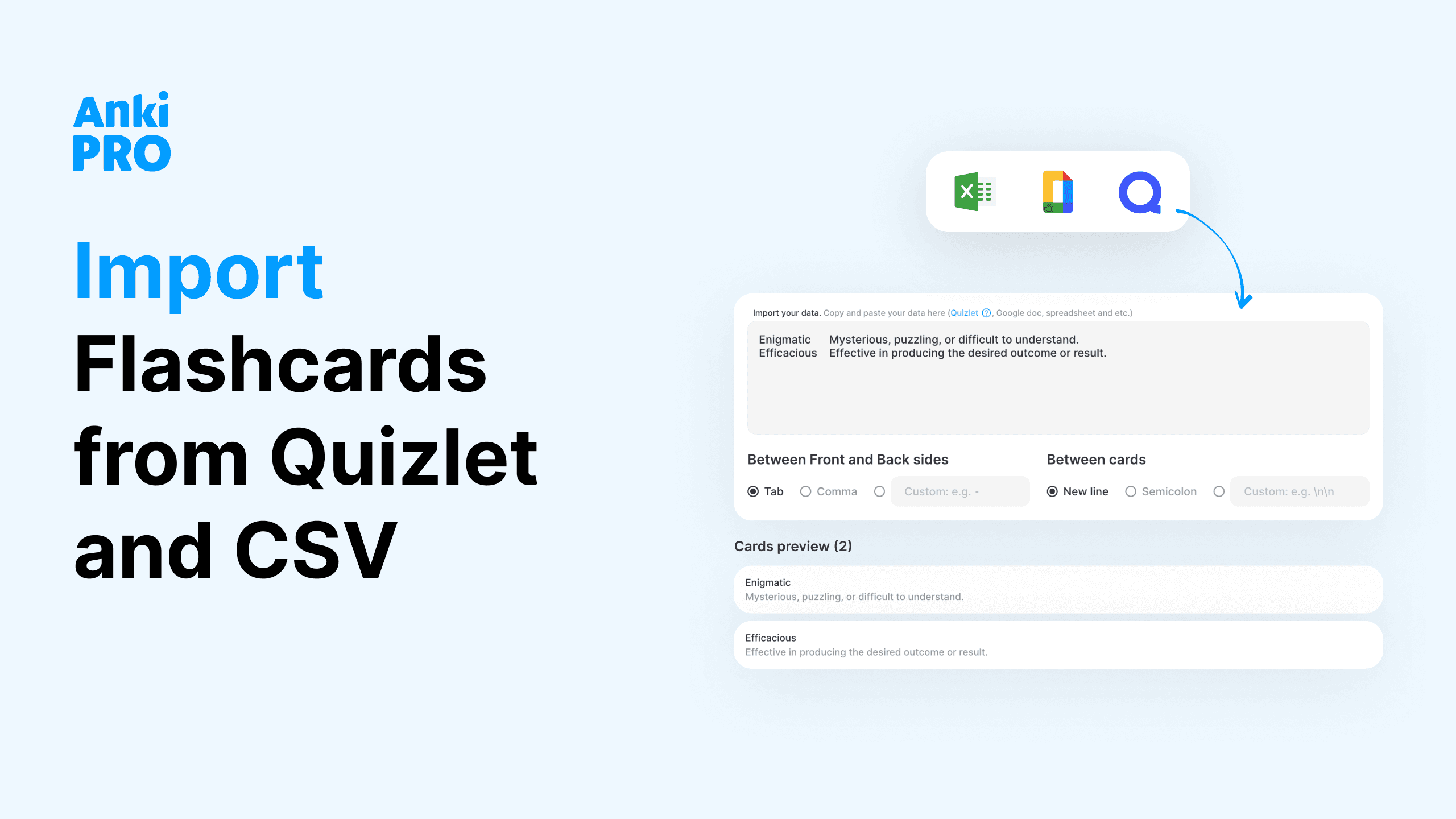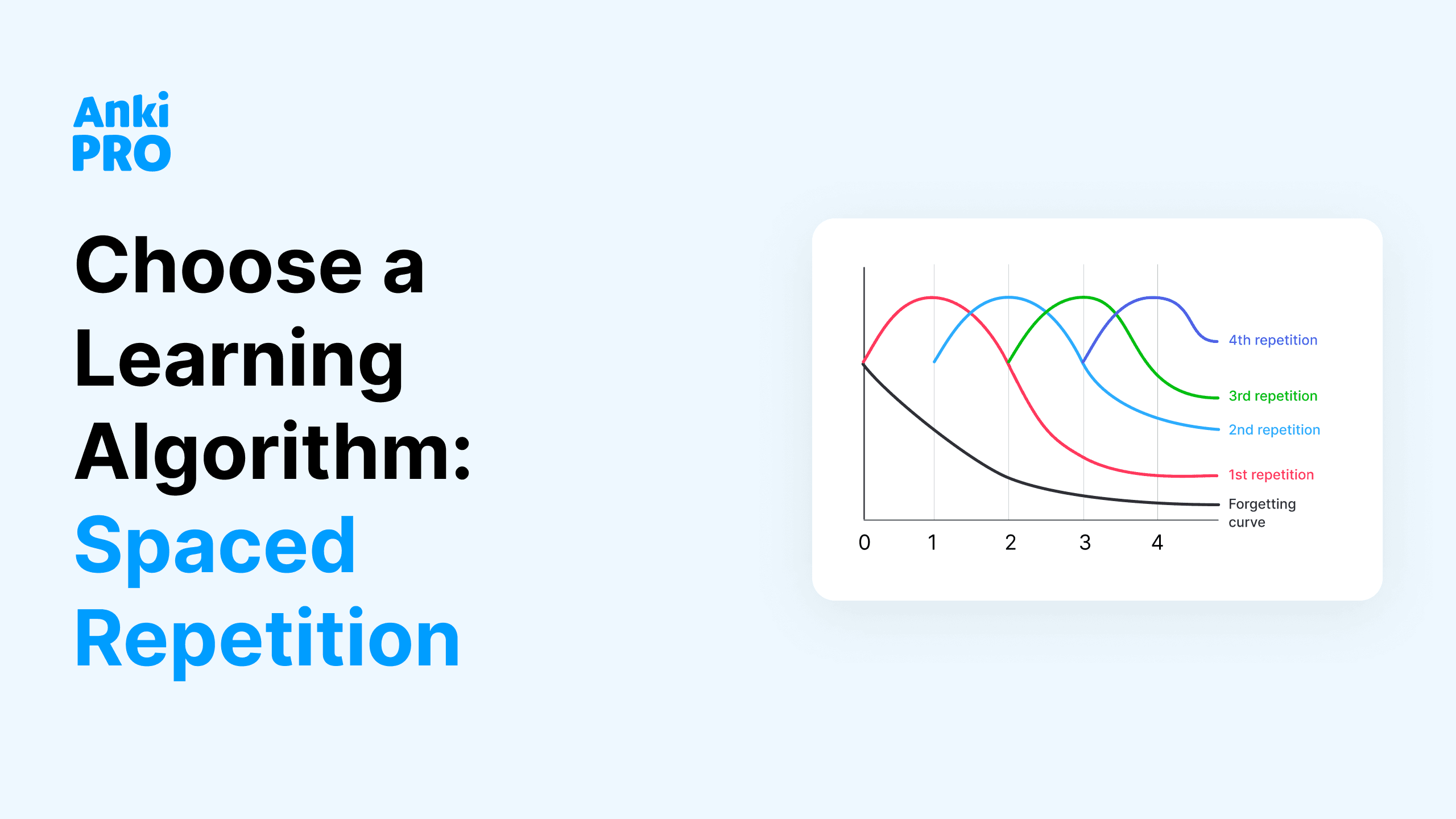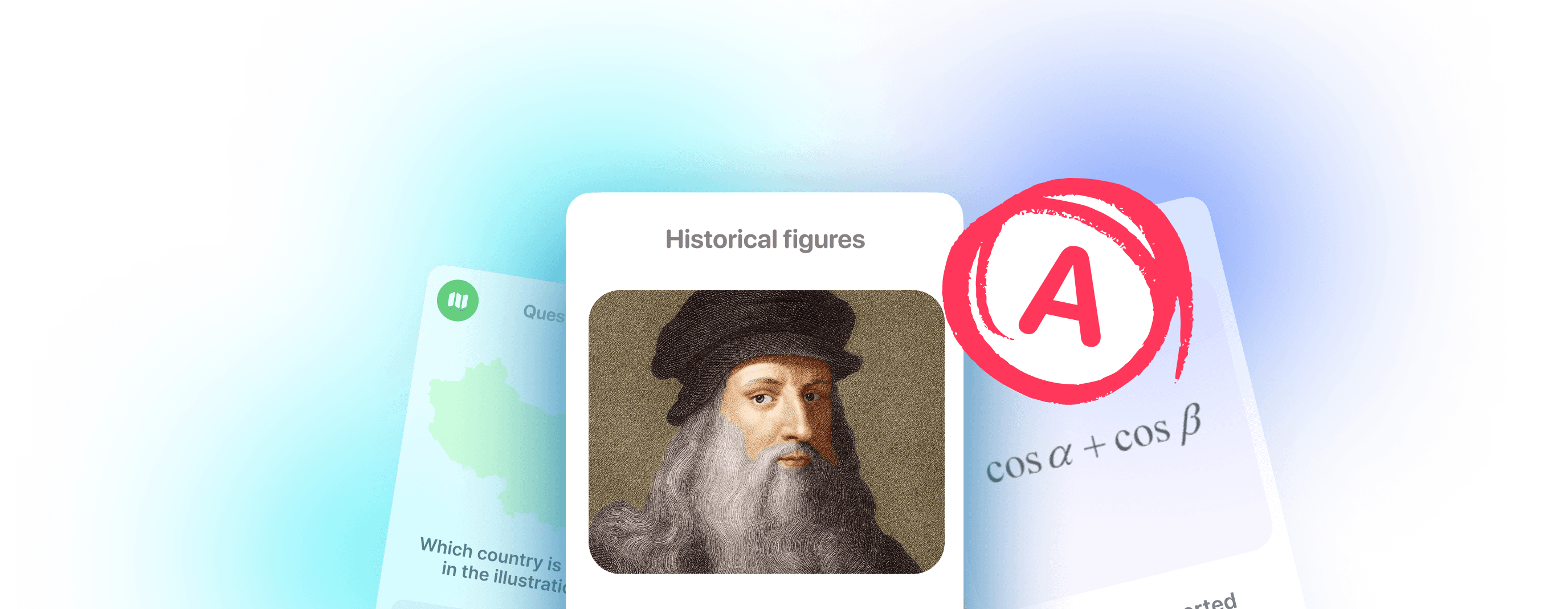When learning a language, we crave more than just pep talks; we hunger for tools, smart strategies, and habits that effortlessly blend into our daily routines. Here’s the most powerful tool: digital anki flashcards.
Anki means “memorization” in Japanese, and it’s also the name of an old app that gives off major ’90s internet vibes. Fortunately, digital flashcards have come a long way since then! Keep reading for expert tips from both language students and teachers on using anki for language learning, with a special focus on the Anki Pro, a free and beautiful app you’ll love!

Benefits of Using Anki for Studying Languages
Since the time of dinosaurs and paper flashcards, “anki” memorization has remained the go-to method for learning new foreign words. Now in digital form, flashcards offer even more advantages, no matter what kind of language learner you are.
Digital anki cards help you remember stuff better, combining the science-backed concepts of spaced repetition and active recall. Active recall means trying to remember something without looking it up. It’s like when you quiz yourself on what you’ve learned instead of just reading it over and over. The spaced repetition system implies studying flashcards again and again but with strategic breaks in between. As a result, Anki Pro algorithms schedule individually spaced review sessions to make you remember new words or grammar rules forever-ish.
Personalization is key to learning a language. Here, you can create your own themed decks or choose from 50K+ anki decks made by other users. Anki flashcards at Anki Pro enable customization with the option to craft flashcards with multimedia elements, color coding, different fonts, etc. If you appreciate aesthetics, you are finally in control of your language-learning vibe!
Last but not least, having a flashcard app on your mobile device lets you study whenever and wherever, whether you’re chilling at home or waiting in line. After all, the goal is to incorporate a new language into your day-to-day life!

Anki Cards for Beginner Language Learners
Anki flashcards offer a structured and interactive approach to vocabulary acquisition, pronunciation practice, and grammar reinforcement. You can get totally creative and invent your own rules for this game. However, for beginners, we recommend learning from other language learners and their teachers.
#1: Make Your Own Decks
While it’s tempting to rely on pre-made decks, crafting your own flashcards can take your learning experience to another level. You can tailor flashcards to align with your specific goals and preferences. Let’s say you learn Italian to prepare for a specific trip: you’ll want to focus on specific words and sentences. This process encourages active engagement with the material as you select words and phrases that are personally meaningful or relevant to your interests. The act of creating flashcards requires you to process and internalize the information, reinforcing your understanding of the material which is key for planting seeds into long-term memory.
#2: Start with Basic Vocabulary
When you’re just starting to learn a new language, it’s smart to begin with the basics. Start by focusing on simple words and phrases you’ll use every day, like greetings, numbers, colors, and common objects. These are the building blocks of all the languages, so getting them down first makes learning everything else easier. It’s smart to group your basic vocabulary into themed decks. In the future, it will help you save time by easily finding space to write down new words and their translation.
#3: Add Pronunciation Tips
Make your flashcards even more helpful by including pronunciation tips. Alongside each word or phrase, add a guide on how to say it correctly. You can include phonetic spellings or even audio recordings of native speakers saying the word. This way, you not only learn the meaning of the word but also how to say it properly. Pronunciation is key to effective communication, so don’t forget to add this extra layer of learning to your flashcards!

Anki Pro offers a “Text-to-speech” function that you can easily activate when needed. Simply click on the “⋮” icon in the upper right corner of a card and toggle the switch to turn it on.
#4: Incorporate Visuals
Don’t just rely on words—add pictures to your flashcards! Visuals can help you remember things better and make studying more fun. When you see a picture along with a word, it helps your brain connect the two, making it easier to remember. So, take the extra step to find or draw pictures for your flashcards—it’ll make your learning experience more colorful and effective!
Use images or illustrations on your flashcards to reinforce word meanings and aid in visual memory recall, especially for beginners who may be more responsive to visual cues.
#5: Make Reviewing Cards a Habit
To remember new words better and actually build active vocabulary, make it a routine to review them regularly. Anki Pro offers a special “Study languages” algorithm designed just for this and rooted in the spaced repetition system. It shows you new vocabulary more often at first, then less once you’ve learned them. This helps you remember them for the long haul. Remember, this feature is only available in the Premium version. Switching to this algorithm is easy: just click the “⋮” icon next to your deck’s name and pick it from the options. By sticking to regular reviews with the “Study languages” algorithm, you’ll make learning new vocabulary easy and joyful.
Anki Cards for Advanced Language Learners
As your language learning experience continues, your relationship with Anki Pro might evolve, too. Here are some precious tips for more advanced anki users:
#6: Try Definition Instead of Translation
As you become more comfortable with a foreign language, consider creating anki cards with definitions in the language you’re learning, rather than relying solely on translations. Providing definitions in the target language helps you to think in that language, increasing understanding and fluency. When you associate words on new cards directly with their meanings in the target language, you develop a deeper comprehension of their usage and context, fostering a more natural and intuitive grasp of new words. This approach also helps prevent the habit of constantly translating back and forth between languages, allowing you to immerse yourself more fully in the language-learning process. Learn words mindfully!

#7: Add Example Sentences
Enhance your understanding of new words by including example sentences on your flashcards. It’s a perfect way to provide context for how the word is used in real-life situations, helping you grasp its meaning and usage more effectively. When creating your flashcards, you can even try to find or create sentences that illustrate different contexts or nuances of the word. This not only reinforces your understanding of the word but also helps you remember it in various contexts. Additionally, seeing words in context can improve your overall comprehension and language skills.
#8: Create Cards as You Read & Watch Movies
Maybe it is time take your language learning to the next level by incorporating Anki Pro into your reading and movie-watching activities. With Anki Pro in your phone and your phone always around, you can easily create flashcards based on the words and phrases you encounter in books or movies. As you come across new vocabulary or expressions, add them to your Anki decks along with their definitions. Reading books and watching movies not only exposes you to authentic language use but also makes learning more engaging and enjoyable.
#9: Use Your Cards While Writing
When you’re tackling writing assignments, it’s the perfect opportunity to reinforce new vocab. Just open up a relevant anki deck while you’re working on your assignment. You’ll see how your writing becomes more abundant this way. There’s a rule: if you need to memorize a word, use it in a sentence. Use the same word a few times and you’ll save it into your long term memory forever. That way, you’re not only acing your assignments but also expanding your active vocabulary at the same time! Luckily, Anki Pro is available from multiple devices, which makes writing like this easy and enjoyable.

#10: Try Advanced Features
Ready to take your language learning to the next level? Anki Pro offers some awesome features that can supercharge your progress. Take, for example, the Fill-in-the-blank feature, also known as Cloze deletion. This lets you hide words in sentences, like prepositions or fixed expressions, so you can practice recalling them in context. Plus, Anki Pro gives you plenty of card-customization options and different learning algorithms to experiment with. Another cool feature is Shared decks, which lets you team up with teachers or study buddies to create decks together. Even if you’re learning solo, you can still connect with others who share your interests and exchange decks. Anki language learning can be fun and enjoyable, no matter your skill level.
Voila! Salesy fairytales aside, installing Anki Pro can become a revolutionary step on your language learning journey. Both IOS users and Android users can download Anki Pro for free and review 50 cards a day without upgrading to Premium! You can also create an account from your browser.
Hopefully, the tips above on how to use anki for language learning were helpful. If you have questions, you’re welcomed to ask them out: [email protected]










